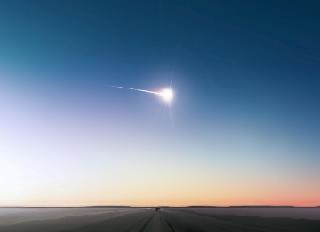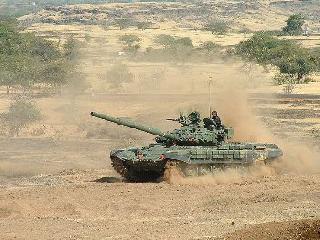
The main body of the meteorite fell to the bottom of the Chebarkul Lake near Chelyabinsk in Russia on February 15, 2013.
MOSCOW (PTI): The meteor that exploded and showered debris over Russia in February this year, injuring around 1,500 people, may have had a close shave with the Sun earlier, researchers say.
The Chelyabinsk meteorite either collided with another body in the Solar System or came too close to the Sun before it fell to Earth, according to research presented at the Goldschmidt conference in Florence.
A team from the Institute of Geology and Mineralogy (IGM) in Novosibirsk have analysed fragments of the meteorite, the main body of which fell to the bottom of the Chebarkul Lake near Chelyabinsk on February 15.
Although all of the fragments are composed of the same minerals, the structure and texture of some fragments show that the meteorite had undergone an intensive melting process before it was subjected to extremely high temperatures on entering the Earth's atmosphere, researchers said.
"The meteorite which landed near Chelyabinsk is a type known as an LL5 chondrite and it's fairly common for these to have undergone a melting process before they fall to Earth," said Dr Victor Sharygin from IGM, who presented the research.
"This almost certainly means that there was a collision between the Chelyabinsk meteorite and another body in the solar system or a near miss with the Sun," said Sharygin.
Based on their colour and structure, the IGM researchers have divided the meteorite fragments into three types: light, dark and intermediate.
The lighter fragments are the most commonly found, but the dark fragments are found in increasing numbers along the meteorite's trajectory, with the greatest number found close to where it hit the Earth.
The dark fragments include a large proportion of fine-grained material, and their structure, texture and mineral composition shows they were formed by a very intensive melting process, likely to have been either a collision with another body or proximity to the Sun.
This material is distinct from the 'fusion crust' - the thin layer of material on the surface of the meteorite that melts, then solidifies, as it travels through the Earth's atmosphere, researchers said.
"Of the many fragments we've been analysing, only three dark samples show strong evidence of earlier metamorphism and melting," said Sharygin.
Researchers also found small quantities of platinum group elements in the meteorite's fusion crust. The team is only able to identify these elements as an alloy of osmium, iridium and platinum, but its presence is unusual as the fusion crust is formed over too short a time period for these elements to easily accumulate.
 Previous Article
Previous Article Next Article
Next Article













The Indian Air Force, in its flight trials evaluation report submitted before the Defence Ministry l..
view articleAn insight into the Medium Multi-Role Combat Aircraft competition...
view articleSky enthusiasts can now spot the International Space Station (ISS) commanded by Indian-American astr..
view article